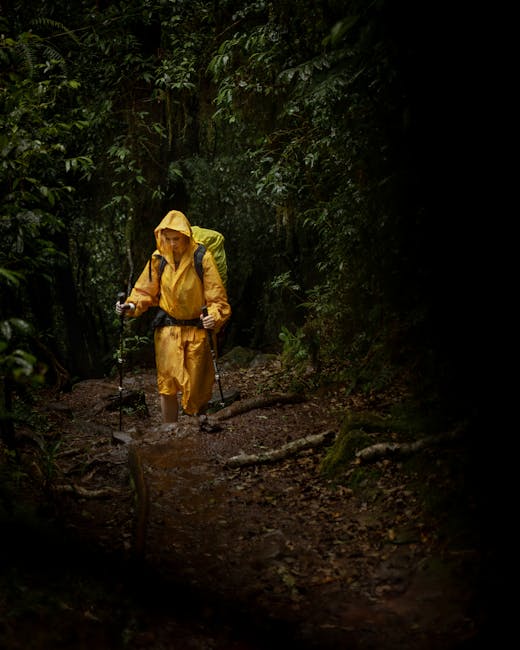Women’s Fall Hiking Layering Guide: Stay Dry, Warm, and Confident on Every Trail
Fall hiking layering for women is all about staying comfortable as temperatures swing from chilly trailheads to sunny summits. The right system keeps sweat off your skin, traps heat when you stop, and blocks wind or drizzle when the weather turns. In this guide, we’ll build an easy, proven layering approach for shoulder season hikes, explain fabrics and fit, and share a pack list you can use every weekend. Along the way, we’ll point to expert safety guidance and practical picks from our shop so you can head out confident, dry, and warm—without overpacking.
Build your fall layering system: the simple three-layer approach


Think in layers, not single pieces. A base layer manages moisture next to skin, a mid layer adds insulation, and a shell shields you from wind and precipitation. The magic is mixing and matching for your activity level and forecast. Start cool at the trailhead to avoid sweating early; add warmth during breaks; vent or peel layers whenever you heat up. The National Park Service routinely recommends dressing in layers for changeable conditions, especially in the mountains and on coastal trails.
Base layer: keep skin dry + sports-bra support
Your base layer should be snug, breathable, and quick-drying. Choose lightweight synthetic or merino tops and avoid cotton, which holds moisture and can chill you once you stop moving. Pair your top with a supportive sports bra that won’t chafe when worn under straps. If you prefer more coverage under a pack hipbelt, a longline style offers extra stability. For active days, a short-sleeve or tank under a light long sleeve gives flexible venting without bulk.
Our recycled longline sports bra balances compression, breathability, and comfort under pack straps.
Mid layer: trap warmth, breathe on the move
Your mid layer adds heat by trapping air. Active hikers usually pick a light fleece or breathable synthetic puffy; both work when you’re moving in cool air. If you tend to run cold, choose a lofted fleece or synthetic insulation with stretch so it layers smoothly over your base and under a shell. Hoodies are especially versatile for quick temperature control and neck coverage.
Shell layer: block wind and precip
Carry a lightweight, breathable shell for wind, drizzle, or surprise squalls. Even on dry days, a windproof layer can dramatically extend the comfort range of your system by stopping convective heat loss. In shoulder season, trails can ice over at higher elevations; if you expect slick, packed snow, add simple traction devices and trekking poles for stability.
Smart add-ons for shoulder season

Bottoms: Choose stretchy, quick-dry leggings or hiking pants that move with you, then add thin thermal tights when temperatures drop. For steep, brushy routes, durable fabrics help resist snags. Feet: Cushioned, moisture-wicking socks plus supportive shoes or boots keep hotspots at bay; carry a dry backup pair. Hands and head: A light beanie, brimmed cap or visor, and thin gloves make a big difference during breaks and windy ridgelines. Sun protection still matters in fall—pack sunglasses and sunscreen.
Fabrics and fit: avoid cotton, prioritize wicking and mobility
Moisture next to skin is the enemy of comfort. Wool and technical synthetics move sweat away and insulate when damp, while cotton holds water and can speed heat loss in cool air. Several National Park Service safety pages explicitly advise avoiding cotton in cold seasons and carrying extra warm layers. Aim for a close-to-body base, a mid layer that fits over it without compression, and a shell with enough room to move freely.
Check the forecast and plan for wind chill
Weather drives what you wear. Before you go, check the hourly forecast for precipitation and wind, note elevation changes, and watch for advisories. Wind accelerates heat loss; NOAA and the National Weather Service explain how wind chill can make exposed skin freeze faster and why dressing in layers matters when values drop. Pack an extra insulating piece for long stops or if your pace slows.
Safety essentials still apply in fall
Even for short hikes, carry the Ten Essentials: navigation, headlamp, sun protection, first aid, knife or multitool, fire, shelter, extra food, extra water, and extra clothes. The American Hiking Society’s list is a great refresher and emphasizes dry-fast layers and a warm hat. In tick country, protect skin with long sleeves and pants, use EPA-registered repellents, and consider permethrin-treated clothing per CDC guidance. In cold, learn hypothermia signs and how to respond.
Quick fall day-hike pack list
Use this as a starting point and tailor to your route and forecast.
- Moisture-wicking base top, supportive sports bra, light long sleeve
- Breathable mid layer (fleece or synthetic), packable wind/rain shell
- Quick-dry leggings or hiking pants; optional thermal tights
- Wool or synthetic socks; backup pair in a zip bag
- Light beanie, brimmed cap or visor, thin gloves
- Navigation, headlamp, first aid, knife/multitool, fire starter
- Extra water and snacks; water treatment method
- Sunscreen and sunglasses; lip balm with SPF
- Phone on airplane mode, power bank, and whistle
- Small trash bag; leave no trace
Fit tips for women: dial comfort and confidence
Layering only works if each piece lets you move. Aim for a base that hugs without compressing breath, a mid that doesn’t bunch under pack straps, and a shell that accommodates your layers without tight elbows or shoulders. Hipbelts sit best when waistbands are smooth and high. If leggings slide or dig, adjust rise or size; if tops ride up, try longer hems or a longline bra for added coverage.
Putting it together: two sample outfits
Use these quick scenarios as templates you can tweak by region and trail.
Cool and dry, low wind (45–55°F)
Short-sleeve base plus light long sleeve, thin fleece hoodie, wind shell in the pack. Quick-dry leggings, cushioned socks, brimmed cap or visor, and thin gloves for early miles. Start cool; add the hoodie during breaks.
Cold, gusty, and showery (35–45°F)
Long-sleeve wicking base and supportive longline bra, breathable synthetic mid layer with hood, waterproof breathable shell. Thermal tights under hiking pants or thicker leggings, warm beanie, glove liners plus shell mitts. Pack an extra mid layer so you can swap if one gets wet.
FAQs
Do I really need a shell if the forecast is dry?
Yes—wind alone can sap warmth on exposed ridges. A breathable, windproof layer keeps convective heat loss down and lets you fine-tune temperature without adding bulk. It also buys time if a surprise shower drifts through.
What fabrics are best for base layers?
Look for merino wool or technical synthetics that wick and dry fast. Avoid cotton, which holds moisture and increases cooling once you stop. Many hikers alternate short-sleeve and long-sleeve bases to match pace and sun exposure.
How do I prevent tick bites in shoulder season?
Wear long sleeves and pants, choose light colors to spot ticks, and use EPA-registered repellents. Treat clothing and shoes with 0.5% permethrin and check your body after hikes—CDC guidance notes permethrin kills ticks on contact and remains effective through several washes.
What are the Ten Essentials again?
Navigation, headlamp, sun protection, first aid, knife or multitool, fire, shelter, extra food, extra water, and extra clothes. Keep them scaled to your route, and refresh your kit each season.
Ready to layer up and go?
Build your fall kit now so the next bluebird day doesn’t pass you by. Start with a supportive base—our recycled longline sports bra—add a cozy mid like a fleece hoodie, and finish with quick-dry bottoms that move with you. Explore our leggings and pants, toss a hoodie in your pack, and top it off with a cap or visor. You bring the stoke; we’ll handle the layers.
Questions about fit or layering? Message us—we're happy to help you gear up smart. See you out there on crisp, golden trails soon.


